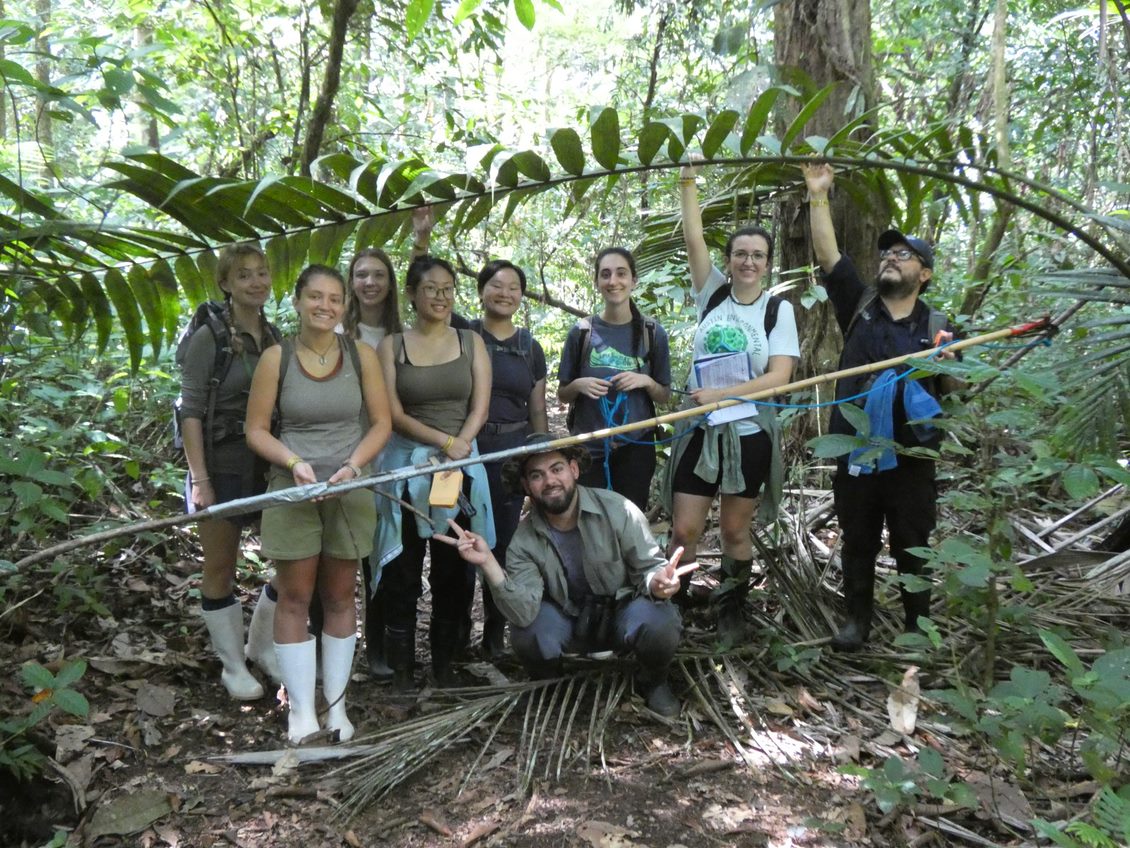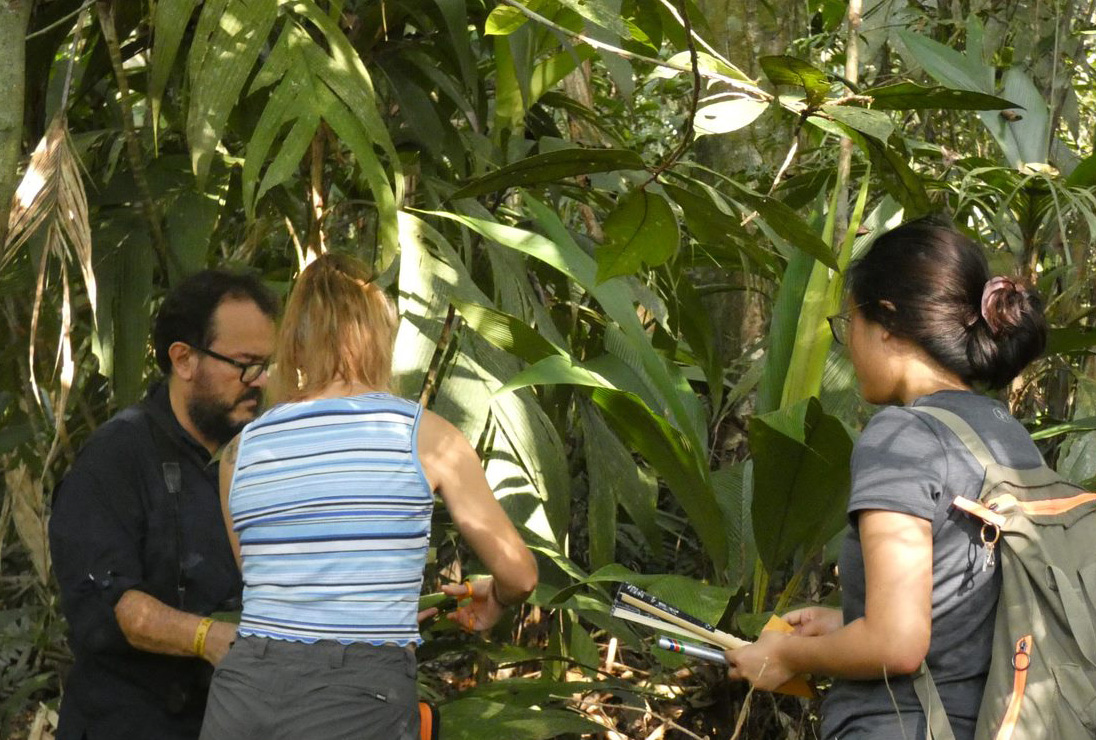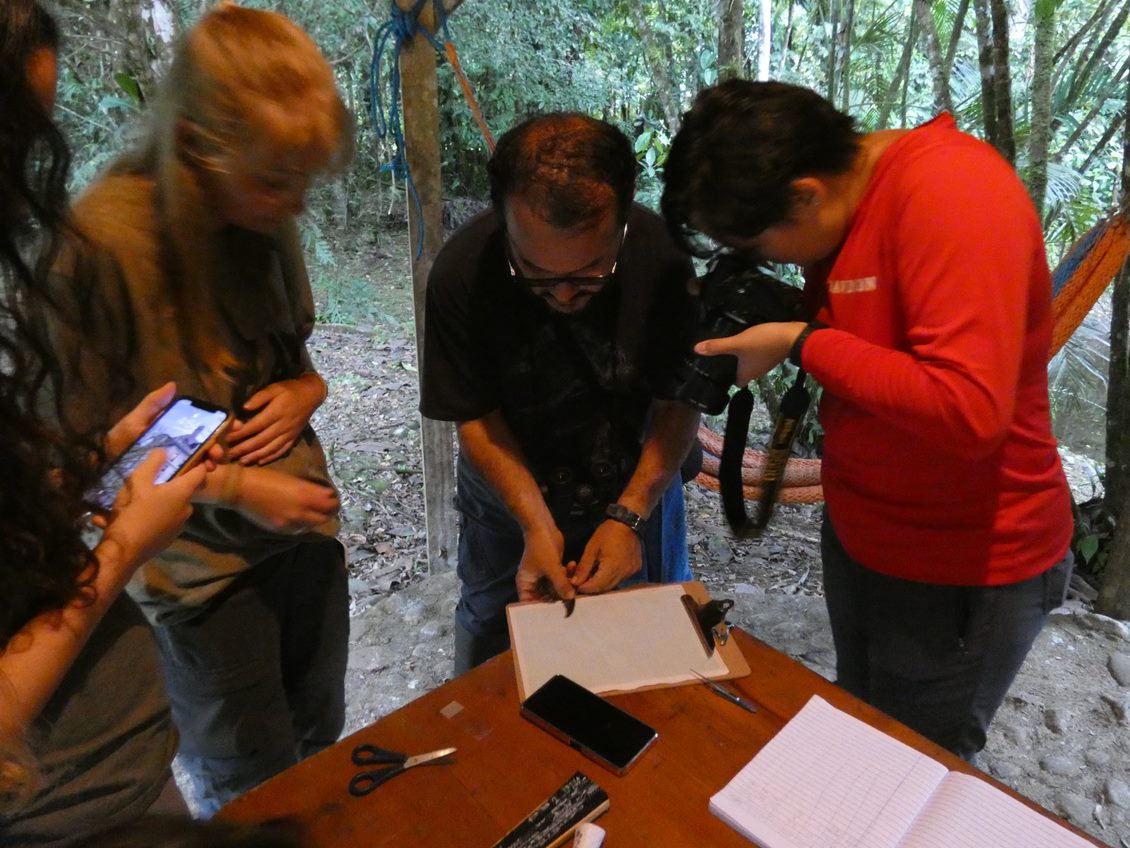Exploring the functional ecology of palms in the rainforest
Published in Ecology & Evolution and Sustainability

The genesis of “Plant size influences specific leaf area in palms: a case for the diminishing returns hypothesis”, Oecologia (2025) 207:56,
https://doi.org/10.1007/s00442-025-05698-0, by Avalos, Frazer, and Le Gall.
By Dr. Gerardo Avalos
Since my undergraduate years, I have been deeply engaged in teaching. I began as a teaching assistant for a natural history course at the University of Costa Rica and later for a tropical ecology course with the Organization for Tropical Studies as well as the University of Missouri-St. Louis, and now as full professor of ecology at the University of Costa Rica and as Director of the Center for Ecological Resilience Studies, The School for Field Studies (www.fieldstudies.org). These experiences shaped my academic path, revealing how teaching and research can—and should—be closely intertwined, with the shared goal of advancing knowledge and contributing to societal change.
Over time, I have taught peers, undergraduates, and graduate students, particularly after completing my Ph.D. in Tropical Ecology and Plant Ecophysiology. Teaching remains a central part of my life. I believe education is one of the most powerful tools to foster a meaningful, lasting, positive change in the world. My teaching philosophy centers on collaborative learning—drawing on the diverse strengths within a team to uncover patterns in nature and co-create new knowledge. The research that led to our recent publication in Oecologia exemplifies this approach.
This project was developed with the collaboration of undergraduate and graduate students from the University of Costa Rica (UCR) and the School for Field Studies (SFS). We focused on palms—an ecologically important but often underrepresented group in studies of plant functional traits, especially about ontogeny. Fieldwork occurred in highly biodiverse sites on Costa Rica’s Caribbean slope: the Manú Research Station, EARTH University Forest Reserve, and Tirimbina Biological Reserve, areas hosting the country’s richest palm diversity.
Our team included UCR students Isabel Vargas and Ricardo Sánchez and SFS students Channelle Chua, Miranda Garcia-Cassani, Sydney P. Barringer, Petra G. Rich, Kaila J. Frazer, and Hélène B.M. Le Gall—the latter two coauthored the paper. Throughout the project, these students immersed themselves in key paradigms of plant physiology, including the leaf economics spectrum and biomass allocation strategies as influenced by leaf longevity—all of which underpin how functional traits are expressed over time. Alongside this, they gained valuable insights into Costa Rican palms' natural history and physiological constraints.

Research at SFS is demanding but deeply enriching. Students participate in every phase of the scientific process—from hypothesis formulation and data collection to analysis and writing. Once trained, they become essential contributors, amplifying our research capacity while helping to shape a vibrant and stimulating intellectual environment. Their curiosity and fresh perspectives frequently challenge assumptions, often leading to deeper and original interpretations of our data. As a mentor, I provide structure, expertise, and familiarity with the literature and statistical tools, but the process is inherently reciprocal.
After the SFS program ended in the spring of 2023, both Kaila and Hélène continued working on the project, helping to refine ideas and participating in the manuscript preparation through to publication. The full process took approximately a year and a half—an invaluable example of long-term academic collaboration born in the field.

Tropical forests are extraordinarily complex, with regeneration trajectories, successional dynamics, and resource allocation strategies that vary greatly across space and time. Despite their abundance and ecological importance, palms have often been overlooked in studies of functional traits and forest dynamics. Most research has focused on woody trees, sidelining palms—even though they are one of the most diverse and widely distributed plant families in the tropics, comprising over 2,600 species across 181 genera. While their contribution to above-ground biomass may be modest in many neotropical forests, palms can dominate certain ecosystems and are hyperdominant in Amazonian forests. Palms are also essential to forest ecology and human livelihoods. They provide critical resources for a wide array of animal species, particularly frugivores that help disperse the seeds of large canopy trees—key players in long-term carbon storage. For human communities, palms offer key materials for food, shelter, tools, fuel, and medicine.

Bringing students into the heart of research not only trains the next generation of scientists—it also deepens our collective understanding of the ecosystems we study. This publication in Oecologia reflects the synergy between teaching and research, and I’m proud of the students who helped make it possible. Our findings underscore the need to integrate palms more fully into ecological theory and tropical forest management. They also contribute to a broader understanding of how plants shift their resource allocation strategies as they grow older and mature—an important, yet often overlooked, dimension of plant functional ecology.
And for those of us who teach, this collaboration is a powerful reminder that our classrooms are not confined by walls. They extend into the forest, where the learning process is as dynamic, interconnected, and alive as the tropical ecosystems we strive to understand.
Follow the Topic
-
Oecologia

This is an international journal dedicated to publishing innovative ecological research of broad interest and welcomes research across the entire field of ecology, supporting and advancing the UN's sustainable development goals.





Please sign in or register for FREE
If you are a registered user on Research Communities by Springer Nature, please sign in
Loved this! The reciprocal benefits of involving students in research is great, and the experience you are providing them with is so valuable. I think that some students studying things like ecology/conservation etc leave university and realise they don't have the practical experience needed to get into the field (like myself). Its great to see you providing this during undergraduate and graduate studies, I hope more people are inspired to do so!